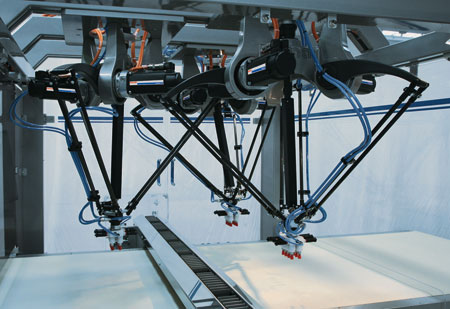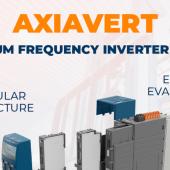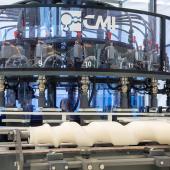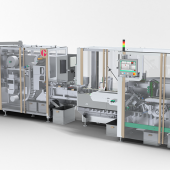Packaging and Robotics: “soft automation” with extreme requirements
In the field of packaging, the use of robotics is often the only answer to meet both the performance requests (i.e. the combination of technical characteristics such as speed, productivity, overall dimensions and energy optimisation) and the flexibility requests (i.e. the possibility to adapt differing cycles, products, batches, dimensions and directions).
The MLC controller and the IndraMotion for Packaging automation system designed by Rexroth  provide an answer for requirements like calculation power, movement precision, easy integration and movement control.
provide an answer for requirements like calculation power, movement precision, easy integration and movement control.
Programming can be carried out either via the sequential instructions (typical programming - e.g. Move Linear to … -) or using IEC61131 standard programming languages. As regards trajectory planning, movements can be made with linear, circular and point-to-point interpolation, both absolute and relative, with the possibility to command the movements in terms of both Cartesian space and joints space, passing from one to the other without stopping the robot. While the connections are being made, the trajectory is followed at a constant speed but you can freely program the speed and the acceleration/deceleration (Sinus² profile), even on a single kinematic axis. Asymmetric trajectories can be created with the aid of splined connections, and the trajectory can even be abandoned midway if there is a new target.
A single MLC control can simultaneously manage up to 16 different kinematics, each with up to 8 interpolated axes. It is also possible to manage up to 4 synchronised belts for each kinematic (belt tracking), and supplementary axes too. A data library is available, with over 100 different transforms, and the user can also implement his own kinematics by defining the direct and reverse transforms.
Finally, several viewing systems can be easily integrated, and up to 32 protection areas can be defined for each kinematic. These features, added to the system's power, ease and versatility, notably reduce design times while still ensuring the flexibility needed for introducing variations during the production test phase.

















